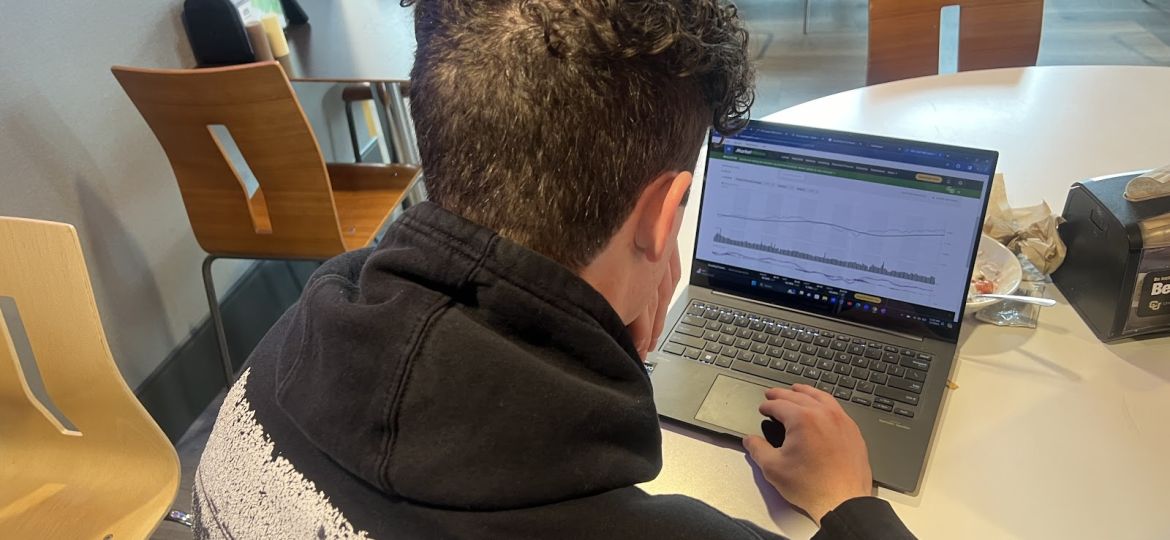
Securing Your Future
A Buff's Guide to Smart Investment
Investing in your future is a smart financial decision you can make at any time. As a student, you have a valuable asset on your side — time. Time allows your investment to grow while compounding interest.
While retirement may seem like a distant concept, starting to invest early can significantly impact your financial well-being down the road. One of the most powerful tools at your disposal currently is a Roth IRA (Individual Retirement Account).
Wise financial decisions can set you on the path to a secure retirement, and there is no better time to start than now.
Why should I invest now?
Investing is like planting a pear tree. The earlier you plant the seed, the more time it has to grow into a fruitful tree — bearing the sweet rewards of long term financial security. Just as winters may test the resilience of the tree, economic downturns may challenge your investments. But, with patience and smart decision-making, you can weather these seasons and watch your investments flourish when the summer of growth returns. So, don’t delay! Start planting your financial seeds today and nurture them for a bountiful harvest later on.
How do I get disposable income to invest?
Freeing up disposable income starts with tracking your expenses. This practice is crucial for achieving a better financial standing, especially for students. It’s a skill that requires discipline but pays off in the long run. Knowing where your money goes is key to managing it effectively.
Assistant Professor at the Leeds School of Business, Nancy Chapple, suggests using tracking tools like QuickBooks for this purpose. She reflected on her own expenses, stating “When I was younger, I was on QuickBooks, and if I were a student I would get on QuickBooks. Students don’t know how much money they spend going out with their friends.”
By allocating even a modest amount from previous spending towards an investment account, even $30 to $100 a month, students can kick-start their journey toward financial independence. Take Professor Chapple’s advice to heart, and starting to track your expenses may very well begin to pave the way to a more secure tomorrow.
What is a Roth IRA?
A Roth IRA (Individual Retirement Account) is a retirement savings account that is a great place to start investing as a student. It allows your investments to grow without placing the burden of taxes on you, eating away at your hard-earned money. When you withdraw your saved funds in retirement, it’s tax-free — including the capital gains (earnings) on your investments. In 2022, the IRS released guidance on Roth IRA contributions, stating “The limit on annual contributions to an IRA increased to $6,500, up from $6,000”.
A good way to visualize the exponential growth of Roth IRAs is to visit the Investor.gov website’s Compound Interest Calculator. By inputting your initial investment amount, contribution frequency and expected rate of return, you can estimate the potential growth of your Roth IRA over a certain amount of time. While discussing S&P 500 returns, Investopedia stated “The average annualized return since its inception in 1928 through Dec. 31, 2023, is 9.90%.”
While past performance is not indicative of future results, this long-term average can provide a helpful benchmark.
How do I open a Roth IRA?
Choosing the right institution is crucial when opening a Roth IRA.
You have various options, including banks, brokerage firms, mutual fund companies and online investment platforms. While Professor Chapple uses a TIAA account, it’s essential to conduct your own research to find a platform that suits your specific needs. When comparing providers, be sure to consider factors such as fees, investment options and customer service quality. Some platforms may offer lower fees but limited investment choices, while others may provide a broader range of investment options but with higher fees. Finding the right balance is key. Once you’ve opened your account, the next step is to decide how to invest your funds. Most providers offer a variety of investment options, including stocks, bonds, mutual funds, ETFs and more.
Before making any decisions, consider your risk tolerance and financial goals carefully. For a better understanding of risk and reward, Forbes has created a helpful chart that illustrates the relationship between risk and potential return.

Don’t hesitate to seek advice from finance professors or use resources available online. Good luck on your journey to building wealth and securing your financial future!

